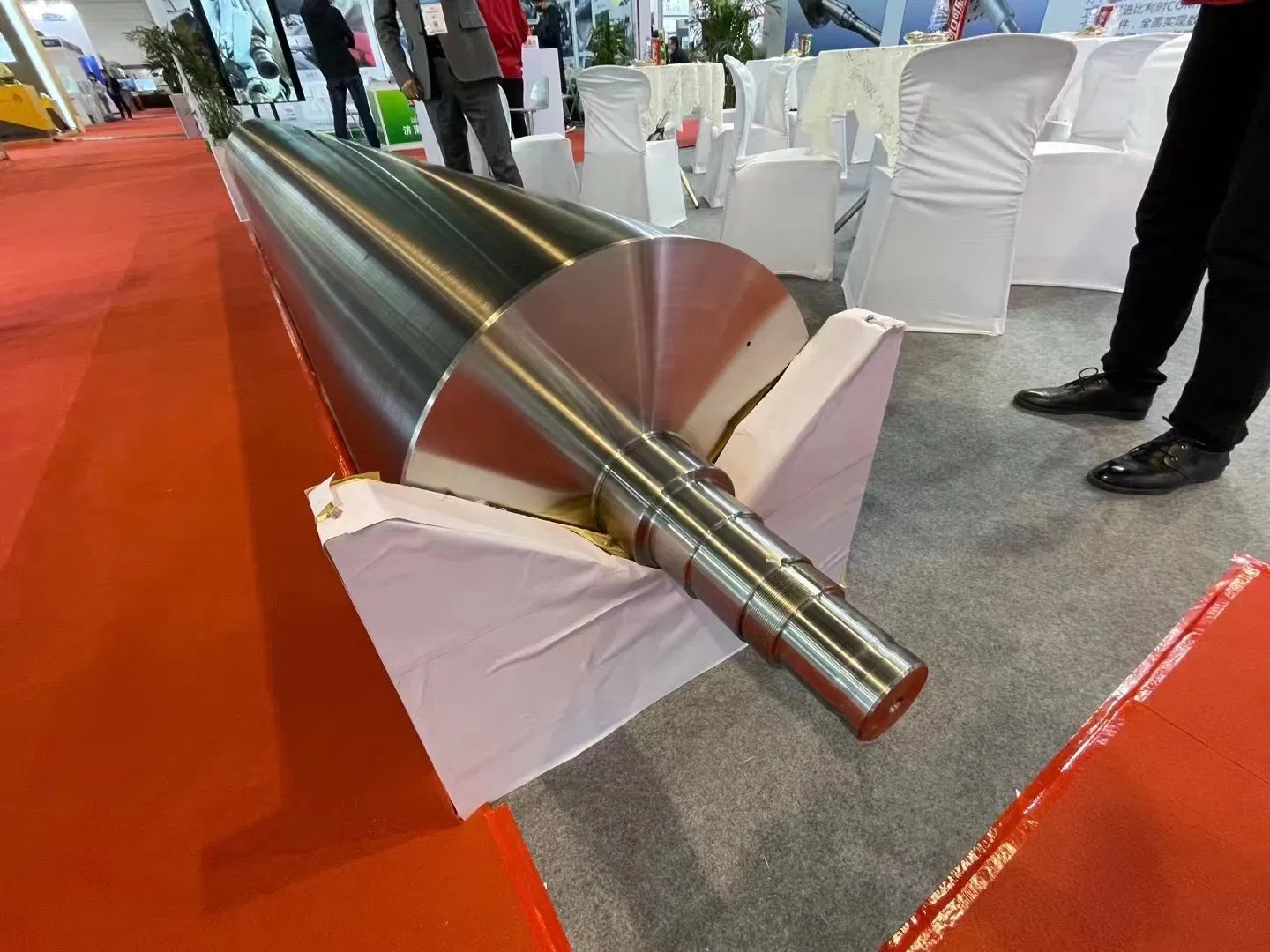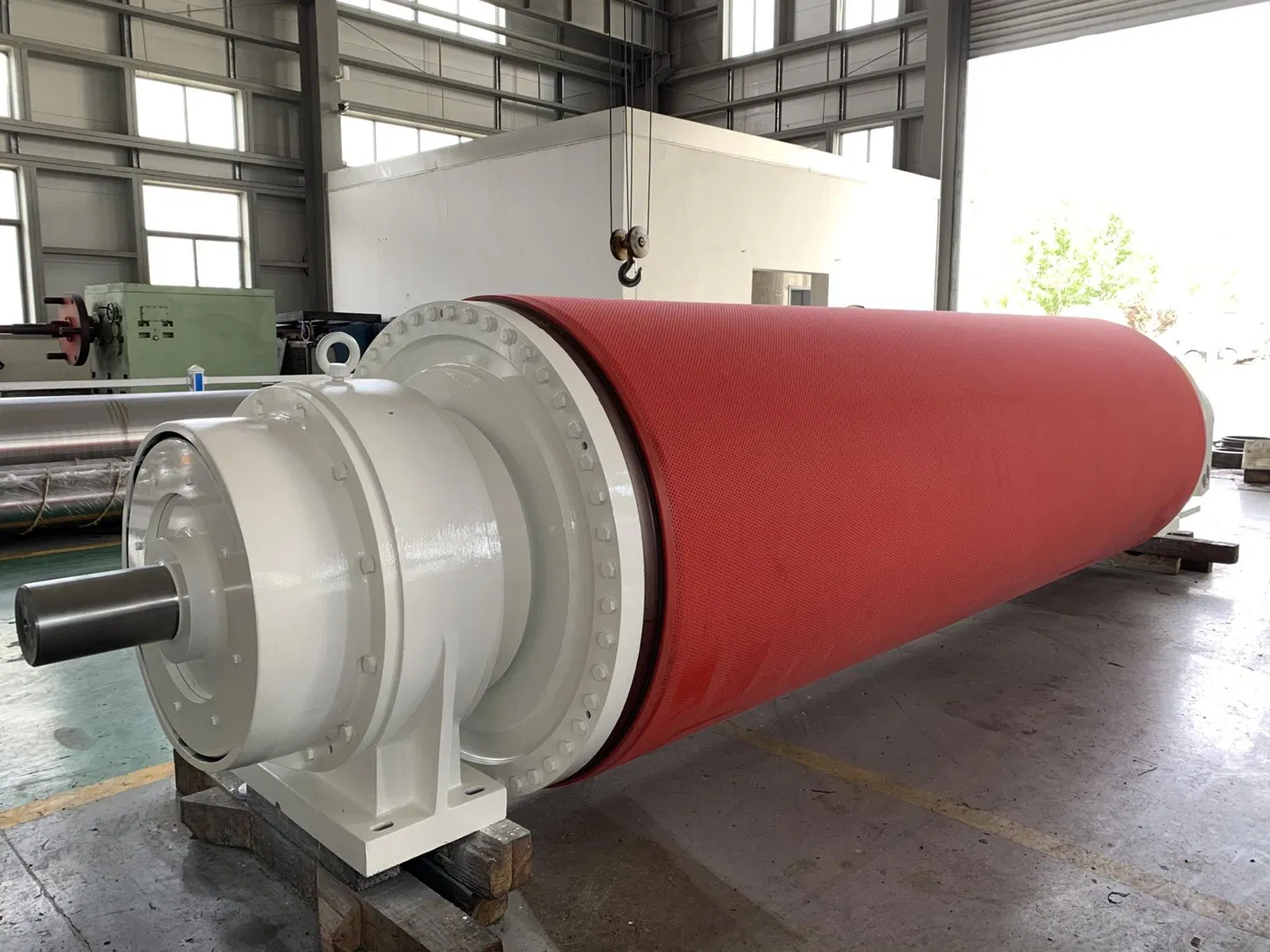In the vast and intricate world of papermaking, the paper machine stands as a colossal titan of industry. It's a marvel of engineering, often stretching longer than a football field, working tirelessly to transform pulp slurry into the paper we use every day. At the very heart of this giant are its rolls—hundreds of them, each with a specific, critical function. To be honest, the performance, efficiency, and quality of the final paper product are directly tied to the quality of these rolls. This makes the task of selecting from a sea of Paper Machine Roll Manufacturers & Suppliers one of the most crucial decisions a mill manager or engineer will ever make.
It's a decision fraught with complexity. You're not just buying a piece of steel; you're investing in precision engineering that needs to withstand immense pressure, high speeds, and corrosive environments for years. Get it right, and your machine runs like a dream. Get it wrong, and you're facing unplanned downtime, quality issues, and, frankly speaking, a massive headache. This guide is designed to demystify the process, providing you with the knowledge to confidently evaluate and partner with the right supplier for your unique needs.
The Heart of the Machine: Understanding Different Types of Paper Machine Rolls
Before you can even begin to talk to a supplier, it's essential to understand that "paper machine roll" is a broad term. The machine is divided into several sections, and each section uses specialized rolls designed for a unique purpose. A failure to appreciate these differences is a common pitfall. Let's break down the main categories.
Forming Section Rolls
This is where the magic begins. The forming section, or "wet end," is where a slurry of 99.5% water and 0.5% fiber is transformed into a fragile, continuous sheet. The rolls here are all about gentle water removal and sheet formation.
- Breast Roll: Located at the very beginning of the forming fabric, this roll supports the fabric as the pulp slurry is deposited onto it.
- Forming Rolls & Table Rolls: These small-diameter rolls support the fabric and help dewater the sheet through a combination of gravity and suction.
- Couch Roll: This is a large, often suction-perforated roll at the end of the forming section. Its primary job is to transfer the delicate paper web from the forming fabric to the press section. It's a critical transfer point that demands precision.
Press Section Rolls
After leaving the forming section, the paper sheet is still incredibly wet and fragile. The press section's job is to mechanically squeeze out as much water as possible. This is a high-pressure environment, and the rolls here are built for brute force combined with finesse.
- Press Rolls: These rolls work in pairs (nips) to squeeze water from the sheet. They can be solid, suction-drilled, or blind-drilled to help receive the pressed water. The design of these is critical for achieving high efficiency and speed, making the market for high-speed paper machine rolls particularly competitive.
- Grooved Rolls: These have grooves on their surface to provide channels for the water to escape the press nip, improving dewatering efficiency.
- Suction Rolls: A perforated shell with an internal suction box helps pull water from the sheet and felt, which is essential in many high-speed applications.
It's worth noting that the covers on these rolls—typically made of advanced rubber, polyurethane, or composite compounds—are just as important as the roll core itself. The cover's hardness, groove pattern, and chemical resistance directly impact water removal and sheet quality.

Dryer Section Rolls
Once the sheet has been pressed, it enters the longest part of the paper machine: the dryer section. Here, the remaining water is evaporated using steam-heated dryer cans or rolls. These rolls are essentially pressure vessels.
- Dryer Cans/Cylinders: These are large, hollow cast iron cylinders heated from the inside with steam. The paper sheet snakes its way over and under dozens of these rolls, getting progressively drier. Their ability to transfer heat uniformly is paramount.
- Felt Rolls: These rolls guide the dryer felts or fabrics that press the sheet against the hot dryer surfaces, ensuring efficient heat transfer and supporting the sheet as it travels.
Finishing & Calendering Rolls
At the dry end of the machine, the paper has its final characteristics imparted. Calender and finishing rolls are all about achieving the desired smoothness, thickness, and gloss.
- Calender Rolls: These are stacks of highly polished, hard rolls that create a high-pressure nip to smooth the paper's surface. They can be heated or "soft" (with a synthetic cover) to achieve different finishes. The precision required for these rolls is measured in microns.
- Reel Spool: The final roll in the process, the reel spool, is where the finished paper is wound into a massive parent roll, sometimes weighing over 50 tons.
Key Criteria for Evaluating Paper Machine Roll Manufacturers & Suppliers
Now that we have a better grasp of the different roll types, how do you sift through the various manufacturers to find the best partner? It goes far beyond a simple price comparison. Have you ever considered how much engineering goes into a single roll that has to spin flawlessly for a decade? In my experience, focusing on these key areas will lead you to a reliable, high-value partner.
Technical Expertise and Engineering Capabilities
A top-tier supplier isn't just a fabricator; they are an engineering powerhouse. Look for a company that invests heavily in research and development. Their engineers should be able to speak your language, understand the unique challenges of your machine, and offer solutions, not just products.
One of the biggest differentiators here is the ability to provide custom paper machine roll design. A one-size-fits-all approach rarely works in papermaking. A great supplier will analyze your machine's speed, paper grades, and operational issues to design a roll that is perfectly optimized for your specific position and application. This includes finite element analysis (FEA) to predict stress and deflection, and dynamic balancing to ensure smooth operation at high speeds.
Material Science and Manufacturing Quality
The longevity and performance of a roll are dictated by the materials used and the quality of its construction. Don't be afraid to ask tough questions about their processes.
- Core Materials: Are they using high-quality cast iron, forged steel, or advanced composite cores? What are their sourcing and quality control standards for these raw materials?
- Roll Covers: This is a science in itself. The supplier should have a deep understanding of polymer chemistry. Ask about their range of rubber, polyurethane, and composite covers. They should be able to recommend the perfect cover compound for your application, whether you need extreme abrasion resistance, high-temperature stability, or specific release properties.
- Manufacturing Precision: A paper machine roll is a precision instrument. Ask about their machining tolerances, grinding capabilities, and balancing standards (e.g., ISO G1.0). A tour of their facility, if possible, can be incredibly revealing. Look for clean, well-maintained equipment and a clear focus on quality control at every step.
Production Capacity and Lead Times
Frankly speaking, a brilliantly engineered roll is of little use if it can't be delivered when you need it. When a roll fails unexpectedly, downtime costs can be astronomical. You need a supplier with the capacity to respond. Inquire about their typical lead times for new rolls and for repair services. A supplier with flexible production scheduling and a solid supply chain is a much safer bet than one that is constantly over-promised and under-delivered.
Beyond the Sale: The Importance of After-Sales Support and Services
The relationship with your roll supplier shouldn't end when the delivery truck leaves your mill. The best manufacturers view themselves as long-term partners in your success. A roll's lifecycle includes installation, operation, maintenance, and eventual replacement. A supplier's commitment to supporting you through this entire cycle is a huge indicator of their value.

Installation and Commissioning Support
Does the supplier offer on-site expertise to help with the installation and startup of a new roll? Having an expert present can prevent costly installation errors and ensure the roll is commissioned correctly for optimal performance from day one.
Maintenance, Repair, and Grinding Services
Over time, all rolls wear down. Covers need to be reground to maintain their profile, and eventually, they need to be completely stripped and re-covered. A crucial service to look for is comprehensive paper mill roll maintenance services. A supplier that can not only manufacture new rolls but also expertly repair, regrind, and re-cover your existing rolls (even those from other manufacturers) offers immense value. This "one-stop-shop" capability simplifies your maintenance logistics and ensures consistency in quality.
Technical Consultation and Troubleshooting
What happens when you have a problem? A great supplier acts as a consultant. Their technical team should be available to help you troubleshoot issues like barring, vibration, or sheet release problems. They can analyze your operational data and provide recommendations to optimize roll performance and extend its life. This proactive support is often what separates the good suppliers from the truly great ones.
Navigating the Global Market: Sourcing Rolls Locally vs. Internationally
In today's globalized economy, you have the option to source rolls from down the street or from halfway across the world. Each approach has its distinct advantages and disadvantages.
Benefits of Local or Regional Suppliers
Partnering with a domestic or regional manufacturer often means easier communication due to shared language and time zones. Logistics are simpler and cheaper, and lead times for both new rolls and repairs can be significantly shorter. When you have an emergency, having your service partner a short truck ride away is a massive advantage.
Advantages of International Suppliers
On the other hand, looking internationally can open up access to specialized technologies or manufacturing techniques that may not be available locally. In some cases, international suppliers, particularly from certain regions in Europe or Asia, may offer a lower initial purchase price. For mills focused on cutting-edge technology or aggressive cost-cutting, this can be an attractive option.
Making the Right Choice
In my experience, the decision often comes down to a balance of cost, technology, and risk. While an international supplier might offer a 15% lower price on the roll itself, you must factor in higher shipping costs, potential import duties, the risk of shipping damage, and the challenges of getting timely service and support. For critical rolls where downtime is catastrophic, the peace of mind and rapid response of a local or regional partner often outweigh the initial cost savings.
The Future of Paper Machine Rolls: Innovations and Trends
The world of papermaking is not static, and roll technology is constantly evolving. A forward-thinking supplier will be at the forefront of these innovations. When evaluating potential partners, ask them about their vision for the future.
- Smart Rolls and IoT: The next frontier is the "smart roll," embedded with sensors to monitor temperature, vibration, nip pressure, and cover conditions in real-time. This data, integrated with the mill's control system, allows for predictive maintenance, preventing failures before they happen.
- Advanced Composite Materials: Carbon fiber and other composite materials are being used to create rolls that are lighter, stiffer, and more durable than traditional steel cores. This allows machines to run faster with less energy consumption, a huge win for both productivity and sustainability.
- Sustainable Manufacturing: Leading suppliers are increasingly focused on sustainability. This includes developing energy-efficient manufacturing processes, creating longer-lasting roll covers to reduce waste, and designing rolls that help mills reduce their own energy and water consumption.
In conclusion, selecting the right partner from the many Paper Machine Roll Manufacturers & Suppliers is a strategic decision that echoes through every part of your operation. It requires a holistic approach that looks beyond the price tag to evaluate engineering prowess, manufacturing quality, and, most importantly, the commitment to service and support. By understanding the specific needs of your machine, asking the right questions, and prioritizing a long-term partnership, you can secure a supplier that will not only deliver a high-quality product but will also be a vital contributor to your mill's ongoing success and profitability.
For more detailed information, please visit our official website:Paper Machine Roll Manufacturers & Suppliers
About the author: John Carter is a seasoned pulp and paper industry consultant with over 25 years of hands-on experience in mill operations and process optimization. He specializes in analyzing paper machine efficiency and has worked with mills across North America to improve reliability and output. John's insights are focused on the practical application of advanced engineering and maintenance strategies to solve real-world production challenges. He is passionate about sharing his knowledge to help the next generation of paper-making professionals thrive. ---


